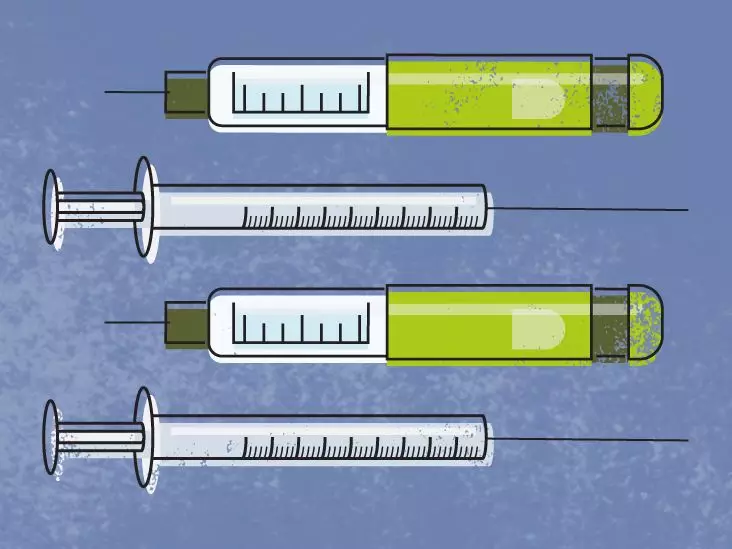Opdivo Qvantig, a powerhouse in the realm of immunotherapy, offers a beacon of hope for those grappling with various forms of cancer. This medication, also known by its generic name nivolumab, enhances the body’s immune response to combat malignancies effectively. What sets Opdivo Qvantig apart is its tailored treatment approach; the dosage varies depending on the specific type of cancer being treated and potential combinations with other therapies, ensuring a personalized strategy that could significantly improve outcomes for patients.
How Dosage is Determined
When embarking on a treatment journey with Opdivo Qvantig, the prescribed dosage will often be a collaborative decision made between the healthcare provider and the patient, informed by the specifics of the cancer type and individual health status. Commonly administered in single-use vials, Opdivo Qvantig is delivered as a liquid solution. The standard injection schedule typically falls within every two to four weeks, mimicking the natural rhythms of treatment and offering flexibility that could benefit the patient’s overall health.
The typical concentrations of this potent drug are set at 600 mg of nivolumab combined with 10,000 units of hyaluronidase in a 5 mL solution. Alternatively, a higher dosage option of 1,200 mg with 20,000 units is available, enabling oncologists to calibrate treatment intensity to match the patient’s unique circumstances.
Specific Cancers Targeted by Opdivo Qvantig
Opdivo Qvantig’s efficacy has been demonstrated across various cancer types, with specifics guiding the prescribed dosages. For instance, patients suffering from kidney cancer may generally be treated with a 600 mg injection every two weeks or a doubled dose every four weeks, depending on the treatment strategy being employed. The consistency in dosing between combination therapies, such as with cabozantinib, streamlines patient experience.
Melanoma, a notoriously aggressive skin cancer, similarly benefits from this regimen. The dual administration method, whether alone or combined with chemotherapy, underscores a strategic approach that tailors treatment specificity without sacrificing effectiveness.
Additionally, patients with non-small cell lung cancer (NSCLC) face a more nuanced dosage schedule that factors in surgical interventions. Treatment before surgery may dictate a dosage of 900 mg every three weeks for three doses, laying the groundwork for subsequent therapies post-surgery at 1,200 mg every four weeks. This strategy reflects an evolving understanding of cancer treatment that is as dynamic as the disease itself.
Beyond Standard Protocols: Individualized Care
The customization of Opdivo Qvantig’s dosage goes beyond mere numbers; it embodies a philosophy of personalized medicine. For other cancer forms, such as head and neck cancers, bladder cancer, and colorectal cancers, the recommended dosages often mirror the established protocols of 600 mg every two weeks or 1,200 mg every four weeks.
Yet, the brilliance of this medication shines in its flexibility. Depending on patient-specific situations, such as responses to earlier treatments and the presence of concurrent therapies, healthcare providers can modify the standard regimen to ensure the optimal balance between efficacy and tolerability.
Administration and Treatment Duration
Opdivo Qvantig is administered as a subcutaneous injection, a process that enhances patient comfort and reduces the logistical complexities associated with intravenous therapies. This means a healthcare professional will generally manage the treatment process, whether at a clinic or through home healthcare options—a nod to modern advancements in patient-centric care.
As for the treatment duration, Opdivo Qvantig advocates a commitment to long-term therapy, potentially lasting for one to two years or even longer. The rationale for an extended duration stems from the observation that effective cancer treatment requires persistence and adaptation to the body’s responses, which can vary significantly among individuals.
Patient Monitoring and Expectations
While the promise of Opdivo Qvantig is undeniable, it is matched by the imperative of ongoing patient monitoring. After each dose, oncologists typically conduct assessments—often via imaging techniques—to gauge therapeutic responses and make informed decisions about future treatment paths. Understanding that treatment efficacy may not always be immediate, patients are encouraged to remain optimistic, as some tumors may take time to respond favorably.
In this intricate dance between patient and provider, Opdivo Qvantig exemplifies a thoughtful approach to cancer treatment that prioritizes the individuality of each patient’s journey, offering not just medication, but also a campaign of hope against one of humanity’s most formidable adversaries.


Leave a Reply